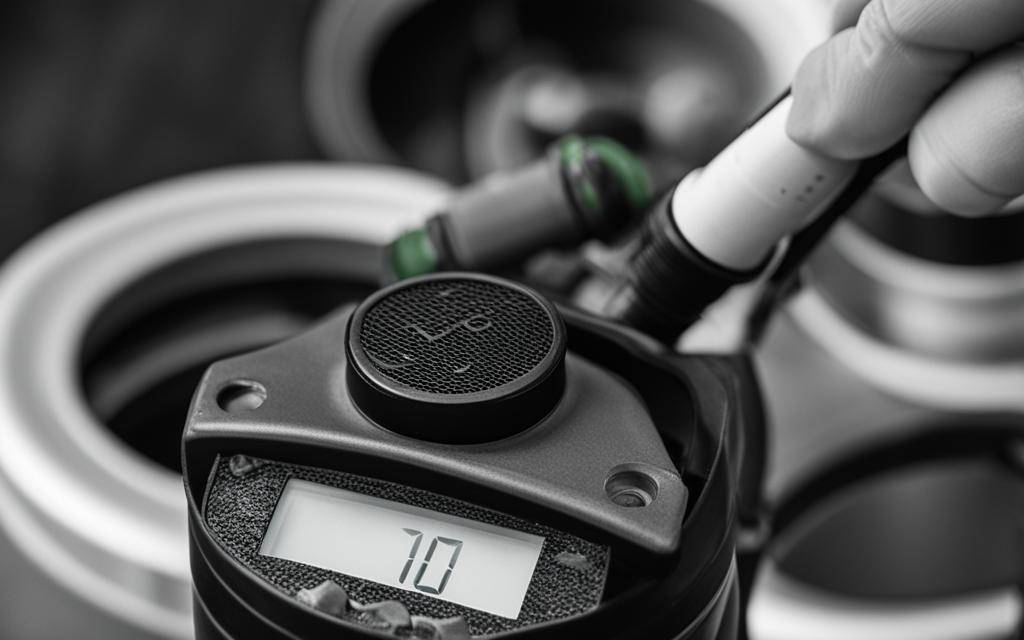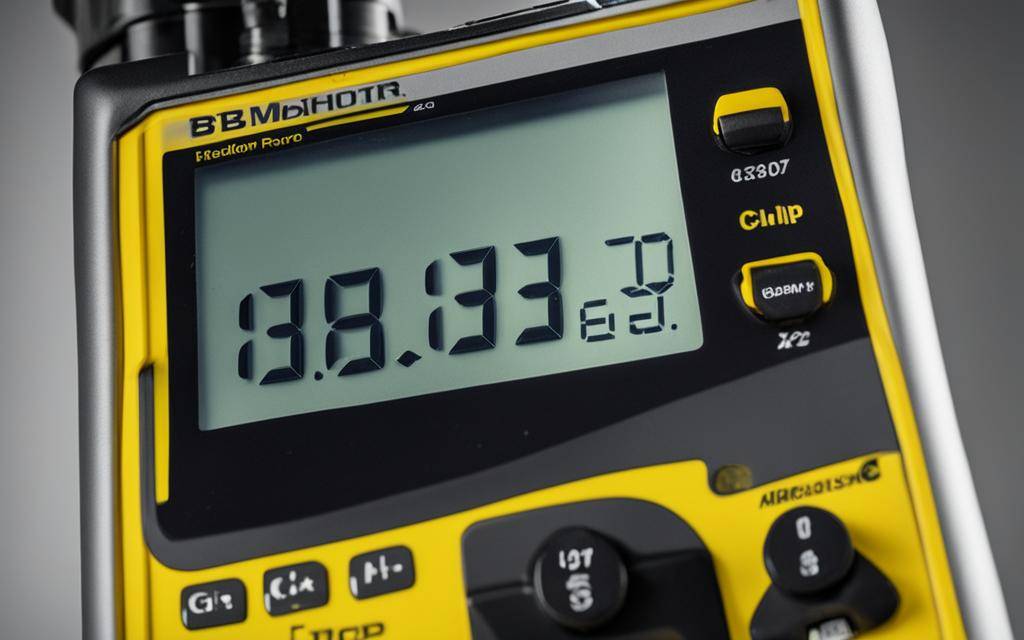Welcome to our step-by-step guide on calibrating your BW 4 gas monitor. Calibration is a crucial process that ensures accurate measurements and reliable performance of your gas monitor over time. In this guide, we will walk you through the calibration process specifically for the BW MicroClip XT, but the steps apply to most monitors in the MicroClip line. Whether you are a safety worker or an individual concerned about gas monitoring accuracy, this guide will provide you with the necessary instructions to calibrate your BW 4 gas monitor successfully.
Calibration is recommended by BW every 180 days, so let’s dive into the essential steps to ensure your gas monitor is accurately calibrated. By the end of this guide, you’ll be confident in your ability to calibrate your BW 4 gas monitor and maintain a safe working environment. So, let’s get started!
The Importance of Calibration for Gas Monitors
Calibration is crucial for gas monitors as it ensures their sensors perform as designed. Similar to tuning a guitar string, monitors need periodic readjustments to maintain accuracy.
Gas monitors play a vital role in ensuring the safety of workers in various industries, including oil and gas, manufacturing, and mining. These devices detect the presence of hazardous gases, allowing prompt action to prevent accidents and protect lives. However, to rely on the measurements provided by these monitors, calibration is essential.
Calibration is the process of adjusting a gas monitor to a known reference point, typically by exposing it to a test gas with a known concentration. By calibrating a gas monitor, you establish a baseline accuracy for its sensors, ensuring reliable performance over time.
A calibrated gas monitor offers accurate readings, reducing the risk of false alarms or underestimating dangerous gas levels. Accuracy is crucial in hazardous environments where the slightest deviation can have severe consequences.
Accurate measurements are especially critical for safety workers who rely on gas monitors to assess the hazards of a confined space, detect leaks, or monitor air quality in various workplace settings. By understanding the importance of calibration and its impact on accuracy, safety workers can confidently perform their duties, fostering a safe working environment.
Why Calibration Matters
Gas monitors are designed to detect specific gases by interacting with their sensors. Over time, factors such as environmental conditions, sensor degradation, and exposure to contaminants can affect a monitor’s accuracy.
Calibration allows you to ensure that the gas monitor is providing accurate measurements by adjusting the sensor response to match the known concentration of the test gas. Calibration compensates for any deviations caused by sensor drift, ensuring the readings are reliable when monitoring gas levels in the environment.
Here are a few key reasons why calibration is crucial:
- Accuracy: Calibration ensures that gas monitors provide accurate measurements, reducing the risk of false alarms or failing to detect hazardous gas levels.
- Reliability: Calibrating gas monitors at regular intervals ensures their continued reliability and performance, instilling confidence in the measurements they provide.
- Safety: Accurate gas measurements are critical for maintaining a safe working environment, preventing accidents, and protecting the well-being of workers.
- Compliance: Many industries have regulations and standards in place that require regular calibration of gas monitors to ensure compliance with safety guidelines.
Overall, calibration is not a difficult or time-consuming task, but its impact on the accuracy and reliability of gas monitors cannot be overstated. By following the manufacturer’s guidelines and calibrating gas monitors as recommended, you can trust in the accuracy of the measurements and work safely in potentially dangerous situations.
As we dive deeper into the process of calibrating gas monitors, you will gain a better understanding of the specific steps involved and the calibration requirements for different models.
Steps to Calibrate Your BW 4 Gas Monitor
Calibrating your BW 4 gas monitor is a crucial process to ensure accurate measurements. Follow these simple steps to calibrate your monitor:
- Prepare the Calibration Gas: Start by ensuring you have the appropriate calibration gas for your specific BW 4 monitor model. Refer to the manufacturer’s instructions or consult the user manual for the correct gas concentration.
- Turn on the Monitor: Power on your BW 4 gas monitor and allow it to warm up for a few minutes. Make sure the monitor is in a stable position and free from any obstructions that may interfere with the calibration process.
- Enter Calibration Mode: Access the menu on your BW 4 gas monitor and navigate to the calibration mode. This mode may vary depending on your specific model, so refer to the user manual for detailed instructions on accessing calibration settings.
- Apply Calibration Gas: Once in calibration mode, follow the on-screen prompts to introduce the calibration gas. Ensure the gas is properly connected to the monitor using the appropriate tubing or fittings. The monitor will automatically detect the gas and initiate the calibration process.
- Wait for Calibration Completion: Allow the monitor to complete the calibration process. This may take a few moments, during which the sensors will adjust to the calibration gas and establish accurate baseline readings.
- Verify Calibration: After calibration is complete, check the monitor’s display for any error messages or warnings. Confirm that the readings align with the expected values for the calibration gas. If any issues arise, consult the user manual or contact the manufacturer for troubleshooting.
By following these steps, you can ensure that your BW 4 gas monitor is accurately calibrated, providing you with reliable measurements and maintaining a safe working environment.
Keep in mind that calibration requirements and procedures may vary between different models and manufacturers. Always consult the user manual specific to your BW 4 gas monitor for detailed instructions and recommendations.

Calibrating the GasAlertQuattro: A Durable and Visible Option
The GasAlertQuattro by Honeywell BW is a durable and visible gas monitor that serves various industrial applications. Equipped with a high visibility screen featuring easy-to-recognize icons for operational status, it ensures quick and accurate readings in hazardous environments.
To maintain its reliability, calibration of the GasAlertQuattro follows a similar process to other gas monitors. Begin by turning on the monitor and entering calibration mode. Then, apply the calibration gas and follow the prompts displayed on the screen. Once the calibration is complete, the monitor seamlessly transitions back to the normal reading mode, ready to provide accurate measurements.
The GasAlertQuattro’s rugged design and reliable sensors make it a trusted choice for safety workers who require a durable and visible gas monitor. Whether operating in confined spaces, oil and gas refineries, or chemical plants, this monitor ensures continuous monitoring and enables quick response to potential gas leaks and hazards.
Manually Calibrating the BW Clip4: A Quick Guide
The BW Clip4 is Honeywell’s latest multi-gas detector designed for reliable and accurate gas monitoring. To ensure precise measurements, regular manual calibration is required. Follow this quick guide to perform the manual calibration of your BW Clip4 gas detector.
What you’ll need:
- BW Clip4 gas detector
- Correct concentration of calibration gas
- Calibration cap
- Tubing
- Single-stage regulator
Steps for manual calibration:
- Start by attaching the single-stage regulator to the calibration gas cylinder.
- Connect the tubing to the regulator and the calibration cap.
- Ensure the BW Clip4 is turned off.
- Double-click the black button to enter the menu on the BW Clip4.
- Select the “To Cal Hold” option to initiate the zeroing process.
- Wait for the zeroing process to complete. The BW Clip4 will display “ZEROED” once finished.
- The unit will prompt you to apply the calibration gas.
- Attach the calibration cap to the BW Clip4.
- Turn on the calibration gas and wait for the sensors to respond. The sensors will detect the gas and calibrate accordingly.
- Once the calibration is successful, the BW Clip4 will display “PASS” and show the number of days until the next calibration is recommended.
Note: It is crucial to follow the manufacturer’s instructions and safety guidelines while performing the manual calibration. Regular calibration ensures accurate readings and reliable performance of your BW Clip4 gas detector.

Conclusion
Calibration plays a crucial role in ensuring accurate measurements with your BW 4 gas monitor or any gas monitor. By following the step-by-step guide for calibrating your specific model, you can maintain both accuracy and safety. Regular calibration establishes a baseline accuracy for the sensors and ensures reliable performance, especially in hazardous environments.
By calibrating your gas monitor as recommended, you can have confidence in the reliability of the measurements and create a safe working environment. Accurate measurements are vital for safety workers to prevent accidents and protect lives. With a properly calibrated BW 4 gas monitor, you can trust the readings and take appropriate actions based on reliable data.
Remember, calibration is not a one-time task. It is an ongoing process that needs to be performed regularly to maintain accuracy. Following the manufacturer’s recommendations regarding calibration intervals is essential to ensure the longevity and effectiveness of your gas monitor. Prioritize safety and reliability by incorporating calibration as a standard practice in your gas monitoring routine.

